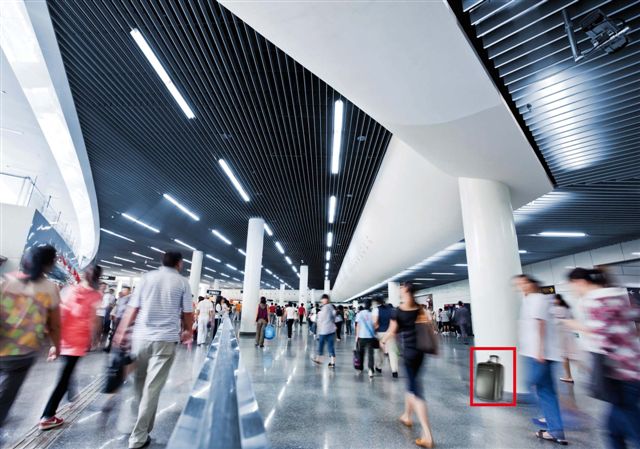Big Data. Analytics. Business Intelligence. You’ve heard it all before. These are terms that likely resonate with anyone in a strategic business function. Security professionals are no exception. Whether we’re talking casinos and airports, or retail environments and financial institutions, the video surveillance market is growing in complexity, and intelligent video surveillance is becoming a necessity.
While surveillance digital video recorder (SVDR) systems and IP-based network DVRs (NDVRs) enable unprecedented access to vast quantities of high-resolution video images, deriving maximum benefit from this wealth of raw surveillance data requires meticulous review and analysis, sometimes on a frame-by-frame basis.
Traditionally, the task of surveillance video review has fallen to trained security personnel. However, Seagate is finding that security professionals are increasingly turning to intelligent video surveillance (IVS) systems equipped with video content analysis (VCA) software to meet these video monitoring demands.
This is why:
1. Long hours lead to fatigue.
Conventional video surveillance environments require security personnel to spend many hours watching live or recorded video to analyze/identify suspicious events. By contrast, IVS systems can scan many thousands of hours of video data without human intervention. Should the IVS system encounter questionable activity, it can automatically notify security personnel for further investigation. IVS systems are immune to the fatigue, distractions and memory lapses that plague human beings.
Photo credit: www.franklin.edu
2. More data is great, until it causes data overload.
Unfortunately, fatigue is often exacerbated with data overload, which is a recipe for disaster. It’s the same reason you should avoid talking on the phone while driving– our brains can only process so much information at one time. Security personnel are capable of monitoring a modest number of incoming video streams, and they become progressively less effective as the volume of video data grows and overloads the ability of the human eye/brain to process visual details. As one industry expert notes,
In the past, security personnel viewed one camera on a single monitor. Now it is not uncommon to find them looking at 20 cameras linked to a single display. After 20 minutes of surveying, the human attention to video detail degenerates to an unacceptable level and video surveillance becomes meaningless. Traditional video surveillance can no longer meet the increased demands of the industry.
A multitude of tests have shown that humans lose anywhere from 50% to 90% of their visual perceptivity after 20 minutes of continuous video monitoring. The more video streams a person is required to monitor in a given period, the sooner impairments in visual perception manifest themselves.
Of course, some surveillance systems employ cameras that utilize video motion detection, but depending on how and where they are deployed, such systems can generate frequent false alarms. Motion detection makes no distinction between falling leaves, a leaping cat or an adventurous burglar.
Photo credit: blog.sfgate.com
3. Cost, cost, cost.
In a perfect world where headcount costs were of no concern, the solution to the first two challenges would be to just add more security personnel. Unfortunately, the world is not perfect and this can become a very costly option.
Even if cost were not an issue, reducing the number of video streams each security staff member must review still fails to eliminate the inherent disadvantages (limited attention span, interruptions and distractions, fatigue) that accompany human monitoring of video data, which leads me to my next point.
4. IVS can think like a human (and sometimes better).
Conventional video surveillance systems can record what they see, but they can’t make sense of what they are viewing. IVS software overcomes such limitations, enabling video surveillance equipment manufacturers and system integrators to create intelligent video solutions that see and process visual information similarly to humans.
For example, such video analytics systems can distinguish between a person and a car, can recognize license plate numbers, or spot unattended baggage, while ignoring the extraneous data that leads human monitors to generate false alarms. These systems can be programmed to track only objects identified as human and send an alert when the subject violates pre-defined rules, such as climbing over a wall.
Photo credit: securitynewsdesk.com
5. It’s easier than ever to obtain surveillance storage
Not surprisingly, IVS systems require enormous storage capacity to house the vast quantity of high-resolution video data necessary to exploit the power of IVS technology. For example, a 24×7 stream of surveillance video data recorded at 30 frames per second (fps),1280×1024 (NTSC) resolution and utilizing H.264 compression offers a great deal of video detail for the IVS system to work with—but it can fill a 500GB hard drive in only seven days. IVS systems typically perform their analysis on recorded video, not live streams; thus, sufficient drive space must be available to store video until it can be analyzed.
Furthermore, the value of such video data persists after that first IVS analysis. While security personnel may initially configure the IVS system to focus on one type of suspicious activity, months later that same video data can be re-analyzed for a different set of patterns or behaviors should security priorities change. Such extended usability of video data demonstrates the value of longer archival periods and the need for more archival storage capacity.
Fortunately, hard drive storage capacities continue to rapidly grow while cost per GB plummets. Cost-effective, high-capacity surveillance drives help reduce the overall expense of deploying an IVS system, thus putting the benefits of IVS technology within the financial grasp of more security professionals.
6. IVS is much more scalable.
Security environments are dynamic, changing both in size and character as a business grows. Thus any video surveillance solution must be able to scale and adapt as needs dictate. With a conventional security system that means hiring and training more personnel to monitor any additional camera streams, a costly and time-consuming process.
Intelligent video surveillance (IVS) systems make expanding a company’s video surveillance area literally a snap; plug in more cameras and the system’s intelligent video software immediately goes to work monitoring and analyzing the newly-added video data. Scalability is effectively unlimited—simply deploy more cameras and additional hard drives to store that video data.
Photo credit: mashable.com
So what do you think? Should security professionals be using IVS?












Leave A Comment